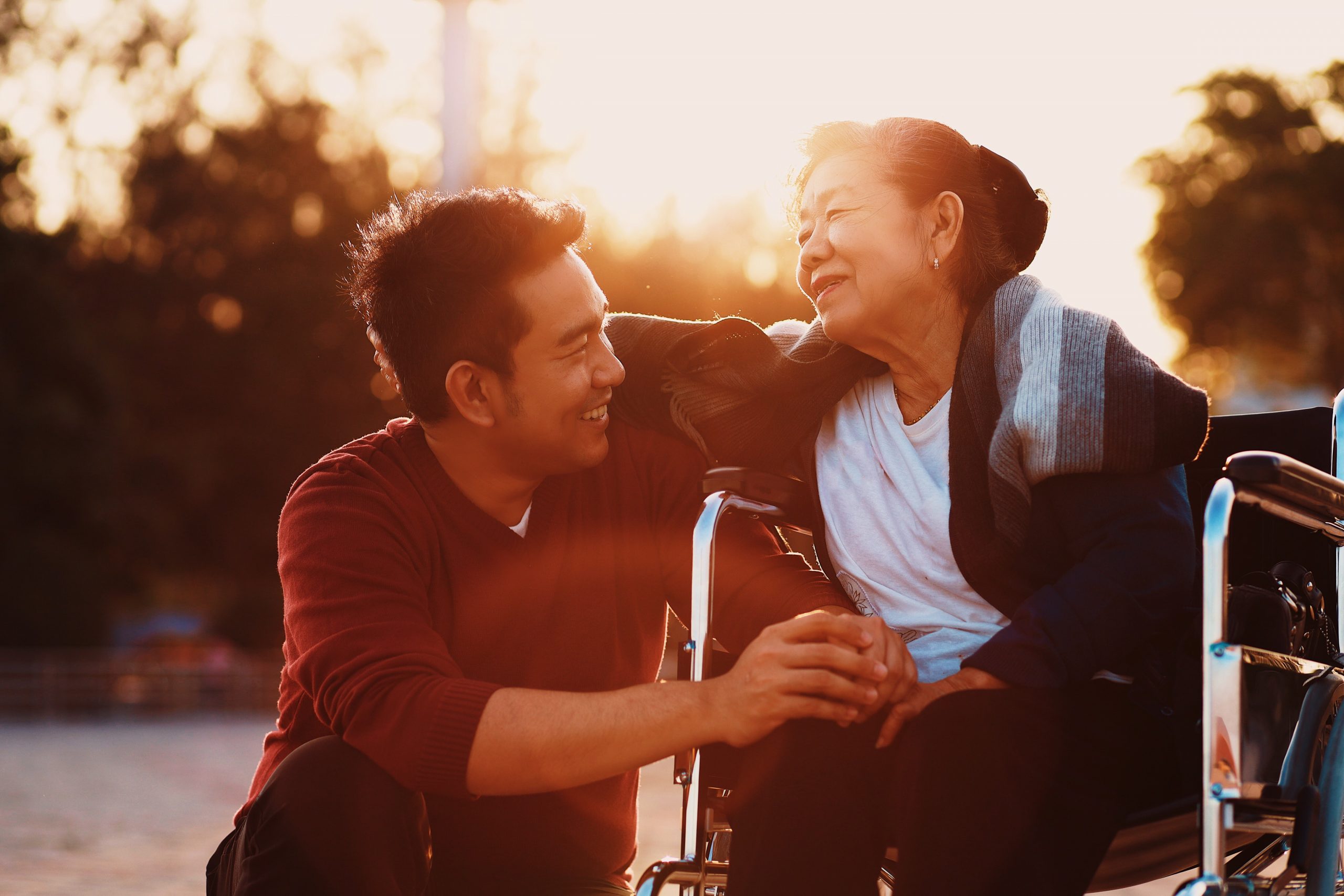 By Dr. Keren Priyadarshini, Regional Business Lead, Worldwide Health, Microsoft Asia
By Dr. Keren Priyadarshini, Regional Business Lead, Worldwide Health, Microsoft Asia
In high-income Asian nations, such as Japan and Singapore, babies born today can expect to live into their ninth decade or beyond.
Advances in medical science and technology promise to lengthen our lifespans even further. In fact, Asia’s ‘silver generation’ – the cohort of people aged over 60 – is due to triple between 2010 and 2050, reaching close to 1.3 billion people.
But as more of us enter our silver years, many will encounter new challenges.
Aging-related chronic diseases, like diabetes, heart disease, and some types of cancer, are impacting lives across Asia and putting enormous pressure on our already under-resourced healthcare sectors.
So, how do we ensure that longevity doesn’t come at the expense of quality of life? And how might data and AI help?
A different way of thinking about aging
We all know that prevention is better than the cure — for patients, healthcare providers and societies in general.
The World Economic Forum says that to manage the needs of an aging population, we need to start early with programs that focus on the young and middle-aged, as well as the elderly. By taking a lifetime approach to patient care, healthcare providers can deliver preventative services that will ultimately help alleviate the negative impacts of aging on people’s lives — and our healthcare systems.
Of course, to our healthcare customers and partners, this isn’t news.
They already know all about the need to shift the focus from reactive to preventative measures. And they know this is only possible by taking a longer-term, more holistic, approach to patient care. What they struggle with is first, getting patient data necessary to inform this approach, and second, finding the time to deliver it.
Solutions like Halza — an app built on Microsoft Azure that lets patients securely store, track, and share their medical data — are reinventing the way patients manage their health information. But healthcare providers themselves are in a different situation.
Outdated operating systems and silos within and across care teams can make gathering, managing, analyzing and sharing patient data a challenge for many healthcare providers. Meanwhile, a shortage of healthcare staff is affecting most areas of our region. In Southeast Asia alone, we lack 1.9 million nurses and midwives — a shortage the sector has felt more keenly since the outbreak of COVID-19.
At Microsoft, we have the privilege of seeing how our customers and partners are using leading-edge technology to tackle these challenges head-on and deliver preventative, proactive care to support our aging populations in the most efficient way possible.
Catching issues before they mature
Cardiovascular disease is the leading cause of death in Asia, and it’s a problem that will only intensify as our populations continue to age. It’s also a problem that healthcare providers struggle to diagnose early enough to make a real difference.
Some predictive tools do exist to help physicians understand the probability of their patients having heart attacks. But as most of these tools have been trained by Western data sets. They don’t take regional variations in risk factors into account — and that means they don’t deliver the same degree of accuracy.
India’s Apollo Hospitals, however, is changing all that.
Apollo Hospitals partnered with Microsoft’s AI Network for Healthcare to create a heart risk score specifically for use in an Indian context, so physicians can better predict the risk of cardiac disease in their patients. Then, Apollo validated the score internationally using federated learning through the Azure platform.
The team at Apollo Hospitals collected more than 10 years of data relating to 400,000 patients across the country. They then used Azure to turn that anonymized data into actionable insights that data scientists and clinicians could use to train machine learning models.
The scoring tool they have developed is jaw-dropping — not just in the speed with which it processes data, but also in its accuracy at predicting the probability of a patient developing coronary disease. In fact, its accuracy is at least 15% to 30 % higher than that of existing models.
Now, physicians at Apollo Hospitals have everything they need to deliver proactive, preemptive and preventative care for at-risk patients — improving their lives while mitigating future pressure on healthcare systems.
Extending care beyond hospital walls
Like most regions around the world, Asia has seen an enormous surge in telehealth and other forms of virtual care over the past two years. And as well as helping healthcare providers manage COVID-19, the remote monitoring boom is having major implications for how we treat aging patients.
On islands near the Japanese city of Nagasaki, for instance, a shortage of medical professionals means that a general check-up can be hard to come by, and a specialist appointment almost impossible. This is a major challenge for people living with complex conditions like rheumatoid arthritis because traveling to the main island for treatment isn’t always an option for older or less mobile residents.
Now, however, Nagasaki University is bringing specialists to clinics on remote islands, with a mixed reality experience powered by Microsoft’s HoloLens2 headset, the Dynamics 365 Remote Assist app and Microsoft Teams.
The university’s Rheumatoid Arthritis Remote Medical System photographs a patient’s hand in their local clinic and creates a hologram of it in realtime. Specialists get a 3D picture of the hand, enabling them to see how the joint moves and better understand the patient’s condition from afar. With Microsoft Teams running at the same time, it’s also a personal experience that simulates a face-to-face chat.
In Taiwan, wheelchair manufacturer Karma Medical is using Azure Internet of Things (IoT) technology and Dynamics 365 Connected Field Service to empower healthcare providers to monitor patients remotely. With iBuddy, Karma Medical’s smart wheelchair, care professionals can track patients’ daily usage for optimized maintenance and monitor their mobility habits in real-time, getting a better understanding of how their elderly patients are faring beyond the clinic’s walls.
And in Australia, Microsoft and our Singapore-based partner Napier Healthcare are supporting Mobile Rehab Australia to extend its re-enablement and restorative health programs to elderly clients in their own homes.
By equipping Mobile Rehab with secure access to patient data, Napier Healthcare is enabling the organization to connect and coordinate with Allied Health Professionals and deliver more personalized care. Mobile Rehab also plans to use Azure AI to get the insights it needs to make resource management and route planning more efficient.
Innovations like these aren’t just making care delivery more efficient for healthcare systems. They’re also improving the quality of life of senior citizens, by giving them the tools to remain independent as they age.
Making the most of life
The importance of data and AI to enable healthcare providers to deliver preventative care cannot be overstated. Nor can the benefits of connected devices and remote monitoring technology. But perhaps the most exciting development of all is the way digitalization is empowering older individuals to stay engaged in the world beyond their doors.
Residents in New Zealand’s Ryman Healthcare facilities, for instance, recently participated in the world’s first retirement village virtual games.
Inspired by the Tokyo Olympics, Ryman Healthcare teamed up with Microsoft partner, Aware Group, to create an immersive, weeks-long event. The Virtual Games brought residents from 42 villages across Australia and New Zealand together. With the help of Surface devices, AI technology and HoloLens mixed reality headsets, the games were a smashing success.
From computer vision-enabled bowls tournaments and cycling races through terrains created by immersive augmented reality tools, through to a giant pub quiz across the two countries, Ryman’s Virtual Games helped residents get active, get engaged, and get more out of every day.
As our populations age, we believe we will see more and more of these sorts of initiatives. Our partners and customers are working hard to ensure that a long life doesn’t come at the expense of a good life. Because, while we often think of technology as the natural habitat of the young, its benefits for the elderly maybe even more profound.








